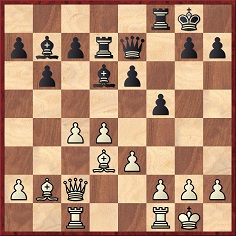
Edward Winter
When was the first known instance of the double bishop sacrifice? Not Lasker v Bauer, Amsterdam, 1889, but a game played five years earlier:
Amos Burn – John Owen
Liverpool, 7 February 1884
Irregular Opening
1 Nf3 e6 2 d4 b6 3 e3 Bb7 4 b3 Nf6 5 Bb2 d5 6 Nbd2 Bd6 7 Bd3 O-O 8 c4 Nbd7 9 Rc1 Qe7 10 O-O Ne4 11 Qc2 f5 12 Ne5 Nxd2 13 Qxd2 Rad8 14 Nxd7 Rxd7 15 Qc2 dxc4 16 bxc4

16…Bxh2+ 17 Kxh2 Qh4+ 18 Kg1 Bxg2 19 f3 Bxf1 20 Bxf1 Rf6 21 Bg2 Rh6 22 d5 exd5 23 Qxf5 Qe7 24 Bd4 c5 25 Be5 dxc4 26 Rxc4 Qd8 27 Rg4 Rf7 28 Qc2 Rh5 29 f4 Kf8 30 Bf1 Rd7 31 Qc3 g6 32 Bf6 Qc8 33 Bg5 Rg7 34 Rg2 Qd7 35 Bc4 b5 36 Qf6+ Ke8 37 Qe5+ Kf8 38 Qb8+ Qe8 39 Qd6+ Re7 40 Qf6+ Resigns.
Source: notebooks of the Liverpool Chess Club.
This important discovery was made by Richard Forster, who published the game in an article on Burn on pages 12-13 of the July 2001 CHESS.
(2673)
Specifying sources is not only an act of fairness to earlier writers but also a way of ensuring that relevant background information is known. In the above instance, the source ‘notebooks of the Liverpool Chess Club’ diminishes the possibility that Lasker was aware of the Burn v Owen game before he played the double bishop sacrifice against J.H. Bauer (Amsterdam, 1889).
See too pages 185-186 of Amos Burn A Chess Biography by Richard Forster (Jefferson, 2004). On the theme of the double bishop sacrifice, a footnote on page 185 had a late addition:
‘However, in the BCM, December 2003, page 666, O. Hindle draws attention to an even earlier specimen by Cecil De Vere from The Field, 14 September 1867 [page 225].’
Detailed coverage of the double bishop sacrifice on the basis of Lasker v Bauer is on pages 368-376 of Emanuel Lasker edited by R. Forster, M. Negele and R. Tischbierek (Berlin, 2018).
Below (with scans kindly provided by the Cleveland Public Library) are two short, little-known games with the same motif. The first comes from pages 167-168 of the South African Chess Magazine, July 1935:
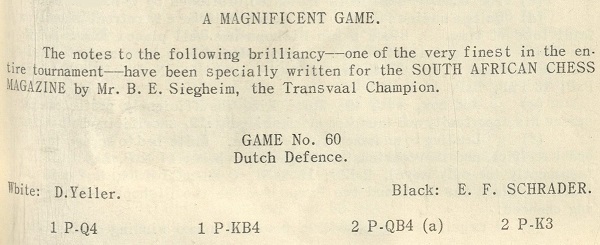
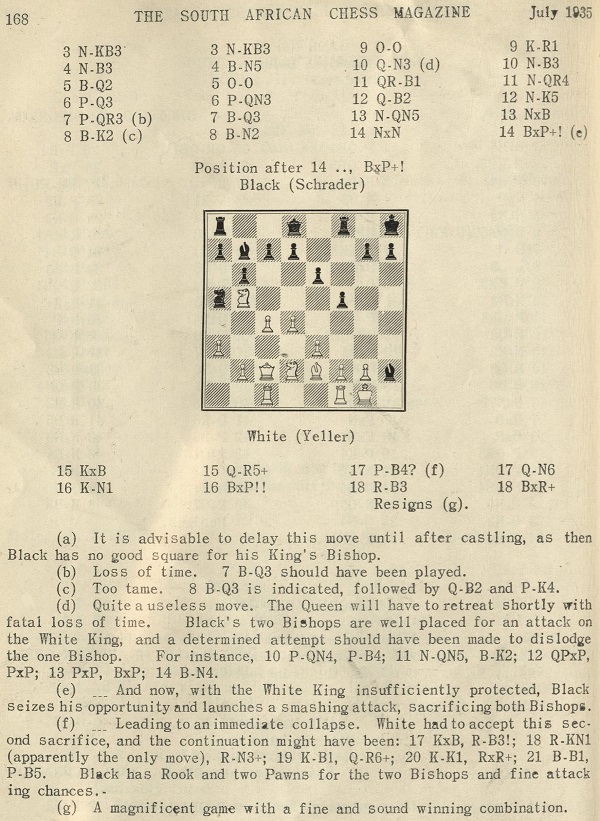
1 d4 f5 2 c4 e6 3 Nf3 Nf6 4 Nc3 Bb4 5 Bd2 O-O 6 e3 b6 7 a3 Bd6 8 Be2 Bb7 9 O-O Kh8 10 Qb3 Nc6 11 Rac1 Na5 12 Qc2 Ne4 13 Nb5 Nxd2 14 Nxd2
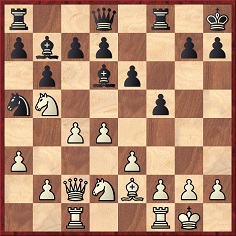
14...Bxh2+ 15 Kxh2 Qh4+ 16 Kg1 Bxg2 17 f4 Qg3 18 Rf3 Bxf3 19 White resigns.
This game between David Yeller and Edward F. Schrader in the 12th South African Championship, Johannesburg, 1935 is on page 146 of A History of Chess in South Africa by Leonard R. Reitstein (Kenilworth, 2003). Both players are in a group photograph on page 144.
The moves 18 Rf3 Bxf3 were omitted when the game was published on page 310 of the Australasian Chess Review, 14 November 1935:
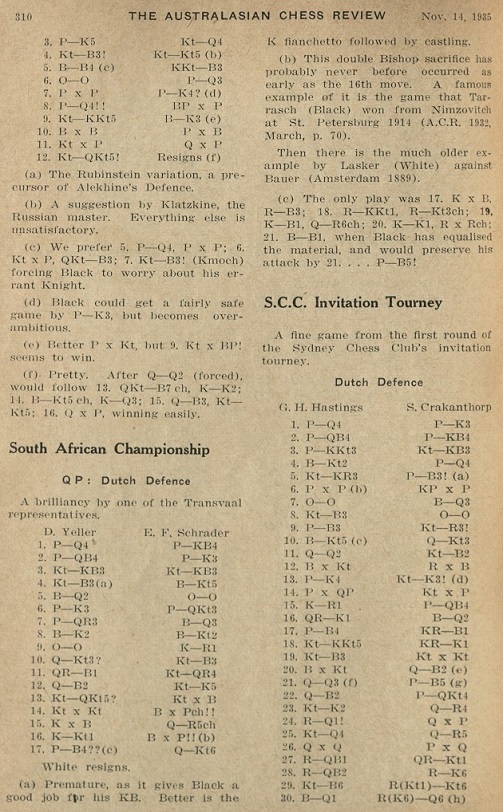
There was a follow-up item about the double bishop sacrifice on page 340 of the 7 December 1935 issue of the Australasian Chess Review:
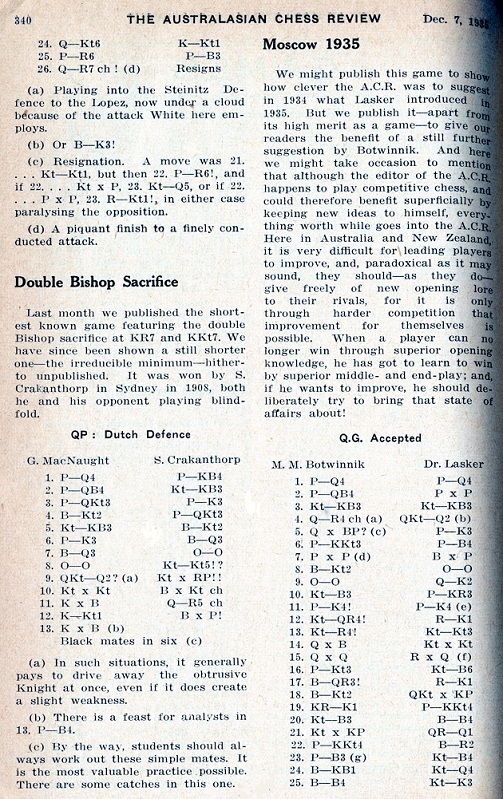
1 d4 f5 2 c4 Nf6 3 b3 e6 4 Bb2 b6 5 Nf3 Bb7 6 e3 Bd6 7 Bd3 O-O 8 O-O Ng4 9 Nbd2 Nxh2 10 Nxh2
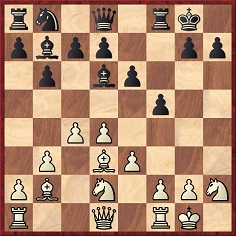
10...Bxh2+ 11 Kxh2 Qh4+ 12 Kg1 Bxg2 13 Kxg2 and ‘Black mates in six’ [sic].
That blindfold game between G. MacNaught and S. Crakanthorp was published again on page 219 of the 13 August 1936 edition of the Australasian Chess Review. The fact that the black king’s bishop was not sacrificed was still left unmentioned, and the handling of the conclusion (‘Black announced mate in four’) was still imprecise.
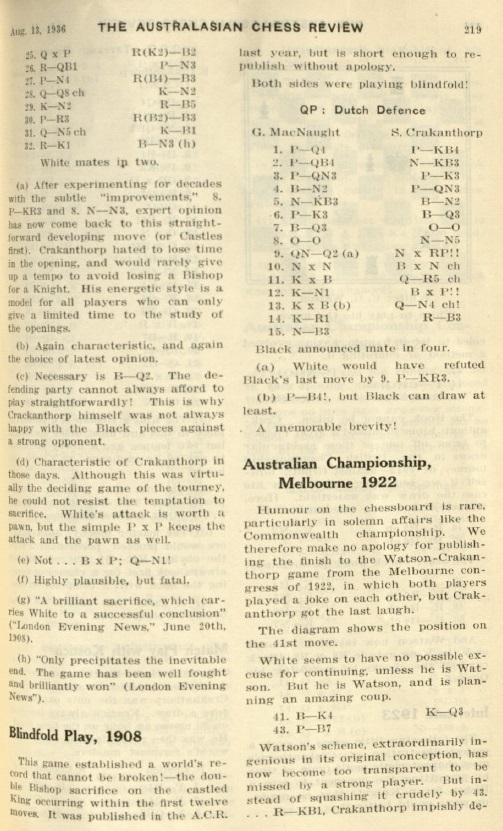
Can the game-score be found in a 1908 publication?
(11207)
The game (remove Black’s knight at g8) between an amateur and Cecil De Vere, London, 1867 which was mentioned in C.N. 11207: 1 e4 d5 2 exd5 e6 3 dxe6 Bxe6 4 Nf3 Bd6 5 Be2 Nc6 6 Bb5 Bd7 7 O-O O-O 8 Bxc6 Bxc6 9 d3 Re8 10 c3 Re6 11 Nd4
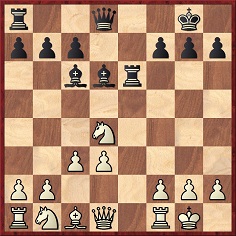
11...Bxh2+ 12 Kxh2 Qh4+ 13 Kg1 Bxg2 14 Kxg2 Rg6+ 15 Kf3 Re8 16 Rg1 Rf6+ and mates in three moves.
As noted in C.N. 11207, the game was found by Owen Hindle in The Field, 14 September 1867 and given on page 666 of the December 2003 BCM (in the Quotes and Queries column conducted by Chris Ravilious). It was discovered after publication of the monograph on De Vere, “The English Morphy?” by Owen Hindle and Bob Jones (Exmouth, 2001).
Fabrizio Zavatarelli (Milan, Italy) points out a passage on page 16 of Why Lasker Matters by Andrew Soltis (London, 2005), in the game Lasker v Bauer, Amsterdam, 1889:
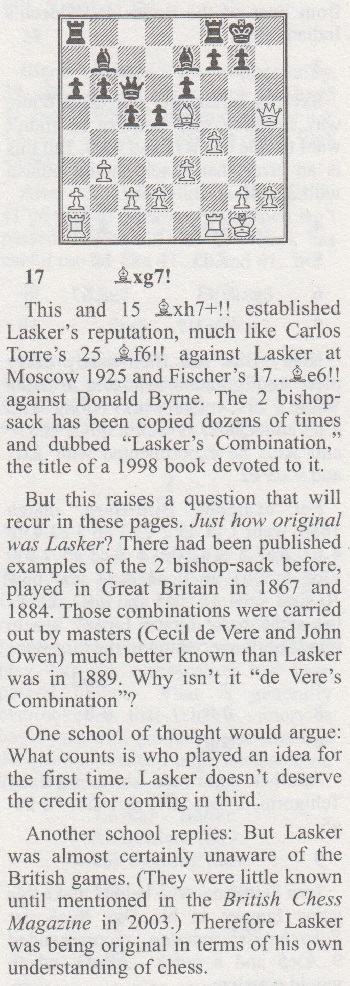
C.N. 11207 commented: ‘Specifying sources is not only an act of fairness to earlier writers but also a way of ensuring that relevant background information is known.’ Soltis did not name the researchers who found the 1867 and 1884 games (Owen Hindle and Richard Forster respectively) or, indeed, the author of Lasker’s Combination (Victor Charushin). The assertion by Soltis that the Burn v Owen game was ‘little known until mentioned in the British Chess Magazine in 2003’ is incorrect (see C.N. 11207).
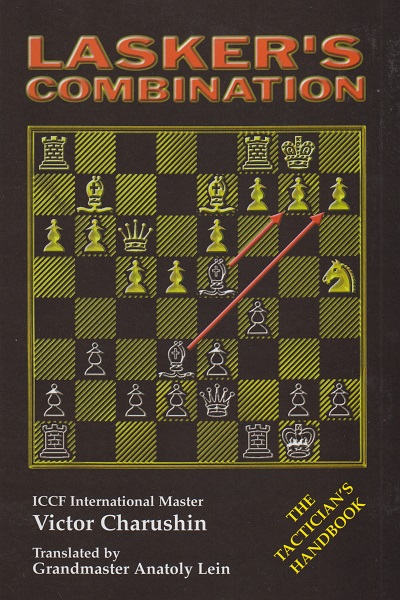
In the above position Lasker, against Bauer, played 15 Bxh7+, and Steinitz wrote on page 268 of the September 1889 International Chess Magazine:
‘The beginning of a most profound and elegant combination.’
Page 354 of the September 1889 BCM had Lasker as the loser:
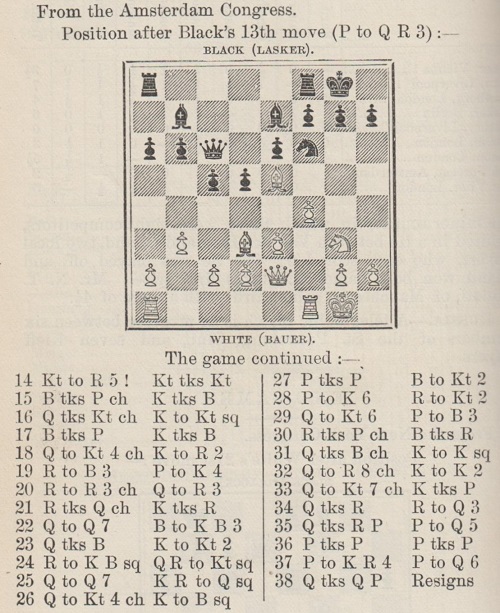
(11211)
The De Vere game published in The Field as noted above:
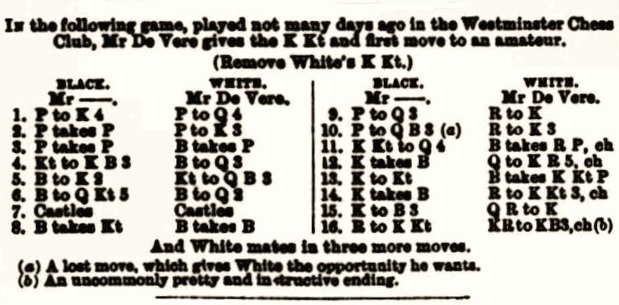
See also Raking Bishops.
To the Chess Notes main page.
To the Archives for other feature articles.
Copyright: Edward Winter. All rights reserved.